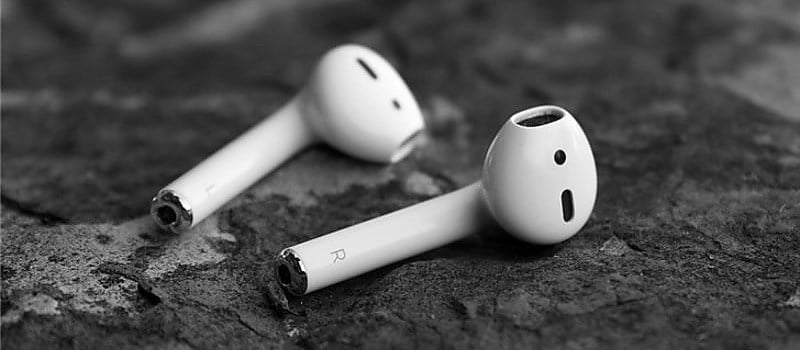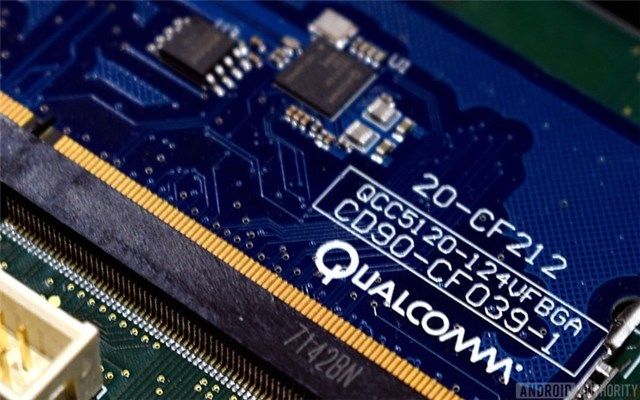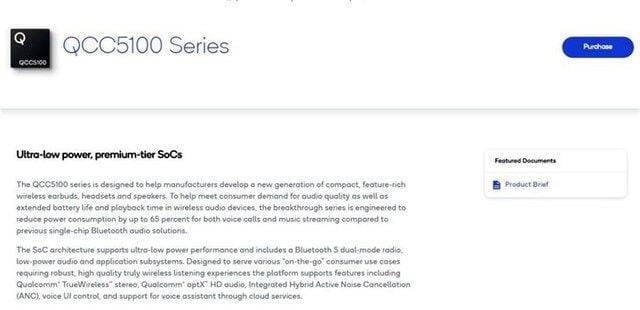Nowadays, the market for true wireless headsets is getting hotter and competitive. And it is getting harder and harder to choose a product that suits you. Apple’s AirPods stand out among the many products that are out there. It can be said that AirPods is also one of the few wireless earphones with a mass appeal. When it comes to AirPods, you have to say Apple’s self-developed chips in the headset, such as the first generation of W1 chips and the second generation of H1 chips make them really stand apart from the competition.
The second generation of Apple AirPods uses the latest Apple H1 chip. The H1 chip has a series of improvements so that the stability and convenience of the headset go to a higher level.
What improvements does Apple H1 have?
The Apple H1 chip is not like a processor in a smartphone or PC. The H1 is a streamlined chip designed for a few tasks. Although Apple will not disclose the secrets inside its chip, we know that the chip includes a modem for processing Bluetooth connections, a digital signal processor (DSP) for decoding compressed audio streams, and a coprocessor for processing sensor information. (Probably the second DSP).
One of the advantages of a highly optimized processor is that it consumes less power than a versatile design. Compared with the previous generation, the Apple H1 can bring longer battery life to the headphones than the W1. For example, the talk time is increased to 3 hours, the previous generation had only 2 hours, and now it can provide 5 hours of audio playback time. In addition, the new chip supports Siri to wake up at any time, and also adds support for Bluetooth 5.0. The previous generation had Bluetooth 4.2. Bluetooth 5.0 does not provide improvement to the sound quality of the headset because the audio codec profile still uses a lower transmission rate. But Bluetooth 5.0 allows audio to be transmitted to multiple devices at the same time, and its main advantage is also in reducing power consumption.
In addition, the H1 chip reduces the latency of the new AirPods by 30%, which is definitely good news for mobile gamers. Apple also promised switching between devices would be twice as fast. In addition, the chip’s middle sensor can also detect which ear the AirPod is in, and only turn on the microphone that is actually worn when making a call.
Although Apple H1 is very powerful, it is not perfect. For example, the chip only supports AAC audio codec and does not support aptX or LDAC. The latter two can provide excellent sound quality on Android phones. In addition, the H1 chip does not support the Active Noise Reduction (ANC) function, which means that external noise cannot be isolated when using AirPods.
In addition, Android users cannot use some of the best features of H1, such as stable connections and fast pairing.
Apple H1 competing products
Obviously, Apple AirPods is not that friendly for Android users. So are there any other products available in the market providing similar functionality? The answer is yes. There are many chips that offer similar or even better features. The Apple H1 chip is not the only option.
1. Broadcom BCM43014 chip
Broadcom is an important player in the wireless communications market, with its own line of true wireless audio chips. For example, this year’s Samsung Galaxy Buds released with the Samsung Galaxy S10 series had the Broadcom BCM43014 chip.
The BCM43014 is also a Bluetooth 5 enabled chip with built-in audio DSP and touch, infrared and proximity sensors. The chip supports fast scanning and connectivity to increase pairing speed. Although Galaxy Buds do not support active noise reduction, the BCM43014 has advanced acoustic algorithms that reduce background noise.
Galaxy Buds supports SBC, AAC and Samsung’s internal scalable audio and voice codecs, and the programmable features of the microcontroller CPU indicate that other codecs are also supported.
Samsung’s Galaxy Buds is clearly a strong competitor to AirPods. There are many designs and functional similarities between the two. But compared to the latter, Galaxy Buds lacks the function of real-time voice activation assistant. And similarly to AirPods, the Galaxy Buds seem to be better for use with Samsung’s own products.
Here’s our Samsung Galaxy Buds Review for those who didn’t check it out yet:
2. Qualcomm QCC and CSR series
Qualcomm is the backbone of the Android smartphone chip market. It also has its own wireless audio SoC series and has the industry’s most advanced audio features, including support for aptX and LDAC codecs, as well as hybrid ANC and ultra-low power Consumption.
Most of Qualcomm’s audio chip products were produced after the acquisition of aptX from CSR in 2010, and the entire CSR company was acquired in 2015. Qualcomm sells a variety of audio chips under the name CSR. Many of them are found in Bluetooth headsets and speakers. The chips support AAC, aptX and LDAC codecs, noise reduction and voice detection.
The latest audio chip brand in the Qualcomm product lineup is QCC. The QCC5100 series chip released by Qualcomm at CES last year is its flagship product, offering aptX HD and low-latency adaptive codec support, as well as hybrid ANC, True Wireless Stereo Plus. And voice activation assistant features, built-in dual-core DSP for audio and sensors. The chip is also a chip supported by the Qualcomm eXtension project, which helps developers implement third-party audio technologies ranging from custom tuning algorithms to Sony’s LDAC codec support. In short, QCC5100 performance is not inferior to Apple’s H1 chip in terms of audio quality, low latency and functionality.
The QCC300X series is a Qualcomm entry-level product. The series no longer supports noise reduction, and only supports the aptX classic codec. It is no longer part of the eXtension project. It also no longer supports voice control and has only one single-core DSP unit. Sensors are not supported.
Unfortunately, so far, it seems that there is no true wireless headset using Qualcomm’s QCC5100 series chips. According to sources, this is because Qualcomm’s technology is more expensive than its competitors, and some potential partners do not understand Qualcomm’s wireless chip portfolio.
3. Other products
For headset manufacturers, there is a range of other options on the market. Microcore, Nordic Semiconductor, Realtek, MediaTek and other companies provide SoCs for wireless audio products. However, many of their products are not optimized for headphones like H1.
Most of the above products, including MediaTek MT2533 and Microchip IS2064, support SBC and AAC by default but do not support more advanced codecs. Some specific products support LDAC, such as IS2064GM-0L3. Some SoCs also support echo and noise suppression technology and Bluetooth 5.0 and support true wireless headphones. However, the differences between these SoCs are large, and few products offer comprehensive features like Apple and Qualcomm.
Diversified chip ecosystem
Bluetooth audio SoCs seem to be rarely discussed, in part because the headset manufacturer itself actually decides which features to implement, not the chip companies. Apple’s H1 was designed with Apple’s specific vision for Bluetooth headsets in mind, ensuring a balance between power consumption and functionality. However, only those who use Apple’s ecosystem products can enjoy these benefits, and the chip does not support the features that high-end audio consumers want.
In addition to Apple’s ecosystem, there are also many products, each with different functions and target consumers. In terms of features such as noise reduction, voice commands and high-quality codecs, Qualcomm has a highly competitive product range. However, the company may not be able to compete with Apple’s internal design team for the price, which seems to hinder its products being used by headset manufacturers.
So guys what do you think? Are we going to see some major change in wireless audio technology in the coming years? Or are things going to stagnate in some time! Do let us know in the comments section below!
Keep visiting for more such awesome posts, internet tips, gadget reviews, and remember we cover,
“Everything under the Sun!”

Follow Inspire2rise on Twitter. | Follow Inspire2rise on Facebook. | Follow Inspire2rise on YouTube.




